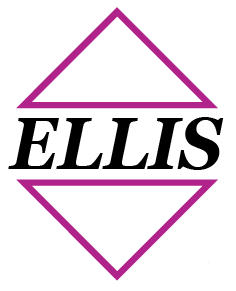Back To FAQ Topics
Thanks for taking the time to present at the NSC in San Diego. Your passion for fall protection really came across during your presentation. I have two follow up questions that I did not ask during the presentation time. But first let me give you some back ground information. I work in a manufacturing facility. The facility has a flat roof, approximately 220,000 square feet and a smaller office area with a flat roof that is approximately ten feet lower and covers nearly 50,000 square feet. At times our facilities maintenance employees need to go up onto the roof to perform preventive maintenance, repair leaks, repair fans, etc. Most of the work could be accomplished without going near the edge but we do have some HVAC, stacks, air compressors, etc. that are 10 – 15 feet from the edge and a few that are as close as 5 feet. I understand we can put temporary guard rails around some of these areas. Currently we access the roof through a stairway hatch that is probably 50 feet from the edge, the hatch is locked and we require a permit to access the roof. 1) Is a warning line required? 2) If so, how many feet from the edge should we place the warning line? I have heard 6ft, 10 ft, and 15 ft.
I think you are switching from construction to general industry where there are no rules presently except exposed edges and guardrails including loading docks. To see what is coming you should go to OSHA.gov and look up and save the proposal of May 24 2010 on 1910 Subpart D & I. There is a move to have General Industry be more like Construction so you can compare with 1926 Subpart M. Certain roof trades can enjoy a variety of Controlled Access Zones – 6 ft for roofers, 10 ft for another trade and 15 ft for another dispelling guardrails when the danger of immediately falling over an edge is minimal. Watch out for skylights on low-sloped roofs – biggest danger possible. Permanent screens are urgent NOW. OSHA’s rule has been watered down in 1984 and is unacceptable for any building owner. Beyond degradation issues with plastic skylights, the mfrs say just stay away. Go A-Z Interpretations, Search: roof edge warning lines – four letters come up incl. 12 15 03.
Thanks for taking the time to present at the NSC in San Diego. Your passion for fall protection really came across during your presentation. I have two follow up questions that I did not ask during the presentation time. But first let me give you some back ground information. I work in a manufacturing facility. The facility has a flat roof, approximately 220,000 square feet and a smaller office area with a flat roof that is approximately ten feet lower and covers nearly 50,000 square feet. At times our facilities maintenance employees need to go up onto the roof to perform preventive maintenance, repair leaks, repair fans, etc. Most of the work could be accomplished without going near the edge but we do have some HVAC, stacks, air compressors, etc. that are 10 – 15 feet from the edge and a few that are as close as 5 feet. I understand we can put temporary guard rails around some of these areas. Currently we access the roof through a stairway hatch that is probably 50 feet from the edge, the hatch is locked and we require a permit to access the roof. 1) Is a warning line required? 2) If so, how many feet from the edge should we place the warning line? I have heard 6ft, 10 ft, and 15 ft.
I think you are switching from construction to general industry where there are no rules presently except exposed edges and guardrails including loading docks. To see what is coming you should go to OSHA.gov and look up and save the proposal of May 24 2010 on 1910 Subpart D & I. There is a move to have General Industry be more like Construction so you can compare with 1926 Subpart M. Certain roof trades can enjoy a variety of Controlled Access Zones – 6 ft for roofers, 10 ft for another trade and 15 ft for another dispelling guardrails when the danger of immediately falling over an edge is minimal. Watch out for skylights on low-sloped roofs – biggest danger possible. Permanent screens are urgent NOW. OSHA’s rule has been watered down in 1984 and is unacceptable for any building owner. Beyond degradation issues with plastic skylights, the mfrs say just stay away. Go A-Z Interpretations, Search: roof edge warning lines – four letters come up incl. 12 15 03.

